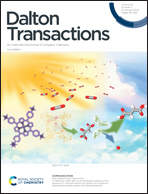Unlocking the catalytic potential of gold(ii) complexes: a comprehensive reassessment
Abstract
Gold(II) complexes, unlike their gold(I) and gold(III) counterparts, have been sparsely employed in the field of catalysis. This is primarily due to the challenges associated with isolating and characterising these open-shell species. However, these complexes offer a wide range of possibilities. On one hand, this intermediate oxidation state has proven to be more easily accessible through reduction and oxidation processes compared to the gold(I)/gold(III) redox couple, thereby facilitating potential homo-coupling and cross-coupling reactions. On the other hand, gold(II) exhibits Lewis acid behaviour, bridging the characteristics of the soft acid gold(I) and the hard acid gold(III). In this review, we focus on mono- and dinuclear gold(II) complexes, whether they are isolated and well-studied or proposed as intermediates in cross-coupling reactions induced by the action of oxidants or light. We delve into the unique reactivity and potential applications of these gold(II) species, shedding light on their role in this field. This comprehensive exploration aims to underscore the latent promise of gold(II) complexes in catalysis, offering insights into their structural and mechanistic aspects while highlighting their relevance in contemporary chemical transformations.

- This article is part of the themed collection: 2024 Frontier and Perspective articles


 Please wait while we load your content...
Please wait while we load your content...